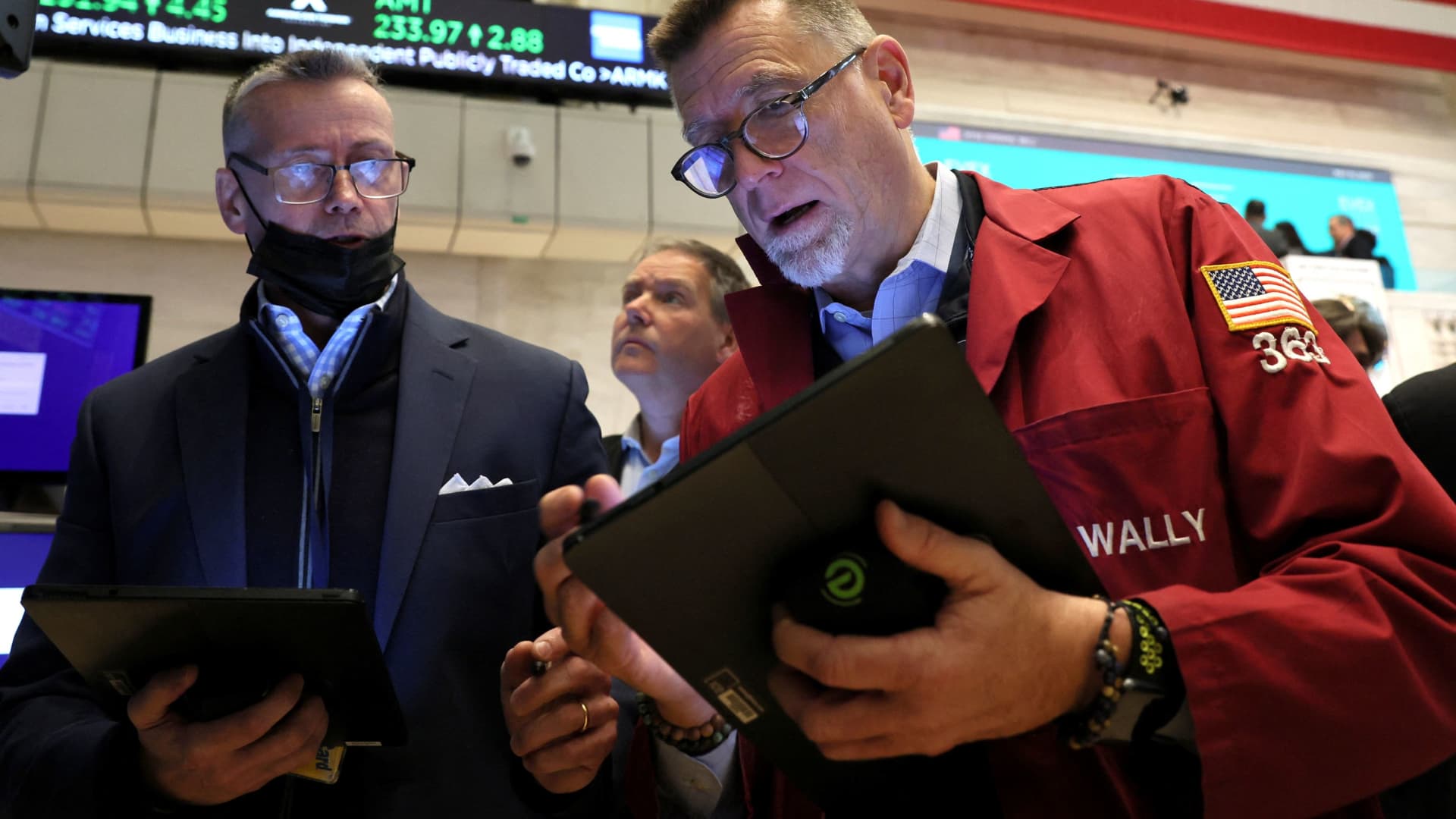
This is the daily notebook of Mike Santoli, CNBC’s senior markets commentator, with ideas about trends, stocks and market statistics. Delayed follow-through to Friday’s bounce as evidence piles up that investors have drastically cut back on their stock bets and consumer activity. Auto-production numbers give the aggressive recession-callers no real backing. The S & P 500 levitates to about last week’s highs, with some feints to absorb the reflexive “sell the rallies” action that this year’s downtrend has engendered. The bounce since last Thursday’s low now amounts to more than 5%, and it has the classic makings of a decent trading low. Of course, so did the attempts in January, February and March. One difference this time is there were a few more extremes in terms of downside momentum and the number of stocks trading under 50-day averages and such. Friday’s bounce rebuilt a small cushion with broad upside energy and 90%+ of volume in advancing stocks. The 13F filings of big hedge funds such as Tiger Global showing heavy liquidation of Big Tech holdings — along with today’s Bank of America fund manager survey revealing heavy bearishness on growth stocks and the highest cash levels in two decades — also feed the idea that pros are lightly positioned. Both bulls and bears allow for the chance of a continued bounce, perhaps up to 4,200 or even above 4,300 on the S & P 500. Comparatively, few handicappers are willing to say the low is in. Most of the current sentiment extremes and such have positive forward-return implications though mostly on a multi-month time frame and with major exceptions during deep bear markets accompanied by recessions (2000-2002, 2008-2009). To go along with that reduction in positioning/crowding risk, progress has been made in leaching valuation risk out of the markets. When the S & P 500 jumped from these same levels a year ago, it soon reached 23-times forward earnings. It’s now around 17, still rich on a long-term scale, but the median S & P stock is a lot cheaper and smaller-cap indexes are getting outright cheap. Yes, there remains a risk to forward earnings forecasts. At several times in the last decade, this was the case yet small/mid-cap indexes trade less expensive than at most any time over that span. Fedspeak isn’t having as much effect in recent days as two half-percent hikes seem almost preset for June and July. Treasury yields up on better economic data/risk sentiment but still well off recent highs. Retail sales ex-autos and ex-gasoline were sturdy and show no real consumer stress broadly speaking. Clearly, there is a pinch to come perhaps as wage-growth slows and inflation stays high, but broadly speaking this fits with the view of the Federal Reserve that the economy is somewhat padded against the expected rate hikes here. Walmart muffed the quarter with overstaffing, heavy inventories and an inability to get compensated for supply-chain stresses and wholesale-price gains. Within a Walmart store is the entire span of consumer necessities and discretionary stuff, so higher prices on groceries meant less to spend on the rest. This is a real dynamic, but it also suggests a self-limiting element to retail inflationary pressures when the company that clears some 2% of U.S. GDP is eating some of the cost increases. The set-up in WMT shares also explains some of its 10% stock drop today. It had outperformed TGT by 20 percentage points over the past six months entering today as investors took shelter in the perceived steadiness and a play on the “trade-down” consumer. Recall WMT is in the consumer staples sector and caught the flows of money hiding there. TGT, a much cheaper stock, down 2% today would seem to now have a lower bar to clear for its results tomorrow. Asset manager stocks have huge leverage to market levels and investor risk appetites. They’re getting smacked as stocks and bonds both lose value and further fund outflows are feared. Quality asset gatherers/managers have taken a serious valuation haircut. Those expecting the markets to find footing might find these a decent way to play that view. Market breadth is solid today, close to 90% upside volume on NYSE and the equal-weight S & P 500 slightly outperforming. VIX is saying the market has had a decent flush and is under less stress, back in the mid-20s. VIX futures have returned to their normal, less-agitated price curve.




